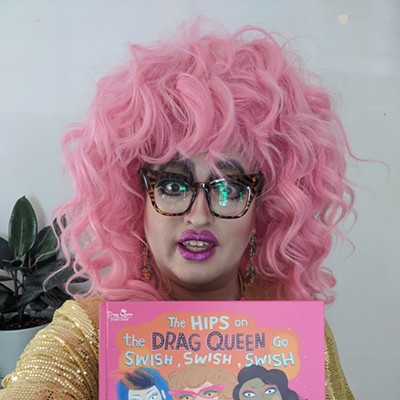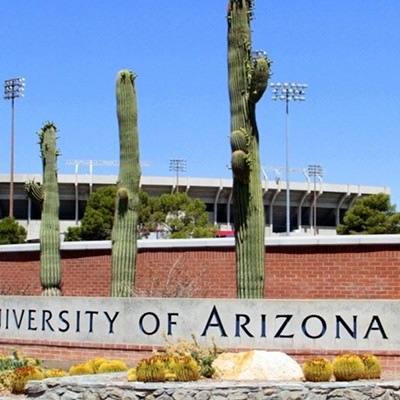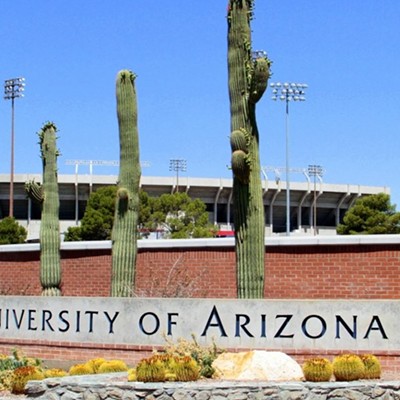OK, that's a slight stretch. But the entry-level class, adored by right-brain milksops for its humane science credits, also exposed undergrad masses to a teeming and fragile world badly needing attention.
Taught with gusto by the late Dr. J.R. Hendrickson, my class wrapped the semester with a field trip to the Sea of Cortez at Puerto Peñasco where we drank Coronas by starlight, snoozed on the beach and awoke groggily before dawn to explore the ocean's glistening fringes, newly revealed at low tide.
The Sea of Cortez, or Gulf of California, is called the Pacific's nursery. What I saw there was fantastic--a dazzling universe of creatures in all colors and shapes: purple anemones, wondrous starfish, odd and reclusive worms and the occasional octopus. And many of those species--if not most--were found nowhere else on the planet.
I returned to Tucson with enduring respect for this waterway reaching fingerlike into the bony desert.
Two decades later, that lovely pocket of life is under brutal assault, and the class from my halcyon youth is no longer taught. This is a dreadful convergence: The UA's Ecology and Evolutionary Biology Department--which formerly offered that course and many others--has picked a lousy time to drop the ball. Indeed, the department's once-bustling coterie of marine biology teachers have dwindled to one part-timer, even as the threatened Sea of Cortez needs zealous attention to avert ecological disaster.
My concerns hinge selfishly on burnished memory. Ben Tudor's worries are far more immediate. The undergrad student is president of the Marine Awareness and Conservation Society. "The UA used to be one of the competitive marine biology schools in the United States," he says. "There was so much being offered here through study in the Sea of Cortez, decades of really advanced programs. Now there's nothing--at the beginning of this year, the one remaining marine biology course was cancelled. I think that's a tragedy."
His 50-member group includes several former marine biology teaching assistants, he says, "and our goals are to enhance awareness of marine systems worldwide, but particularly in the Gulf of California."
The society holds workshops, speaks at high schools--and pushes hard to get marine biology firmly back in the EEB Department.
These days at the UA, funds--or their absence--are the biggest topic on campus. That holds true for EEB, where department head Rick Michod says there's no "simple answer" for the decline of marine biology. "But basically," he writes in an e-mail response, "all of the problems boil down to money, and too few faculty positions for our EEB program, which is supposed to cover basic ecology and evolutionary biology at all levels ..."
Michod says teaching about everything from microbes to vast ecosystems is "a tall order for only 20 faculty (members)."
Still, at least the entry-level marine biology course is slated for a comeback, he writes. "The dean is supportive of our increasing to 25 faculty in the coming years, so hopefully we will have marine biology better represented in the future. The teaching of marine biology continues to be an important issue for us."
That comeback can't arrive too soon. Over-fishing and horrid fishing techniques by shrimpers are squeezing life from the Sea of Cortez. Armed with thick nets--called chinchorros--these trawlers are scraping the gulf bare.
What typically comes up in their nets are a few shrimp and tons of other marine life, which is usually tossed into barrels to die. The stats on this carnage are revolting: according to the U.N. Food and Agriculture Organization, 9.7 pounds of other marine life are killed for every pound of shrimp that arrives at your supermarket.
Among the casualties: sea turtles, sea lions, manta rays, and the world's most endangered porpoise, called the vaquita.
There have been signs of hope. In 1993, the sea around Puerto Peñasco became part of the Upper Gulf of California and Colorado River Delta Biosphere Reserve, giving it special protection as a crucial reproduction habitat and nursery. With that change came restrictions on fishing--which has been fought by many fishermen, and simply ignored by poachers.
But when and if the Sea of Cortez begins to recover, deep working knowledge of its ecosystem will become critical. Only a few hours away, the UA should be at the center of that effort.
Not that other departments don't have a hand in such study. The UA's School of Renewable Natural Resources offers respected fisheries and wildlife courses. And Geosciences has an excellent oceanography program.
But when he hired on with EEB in 1963, Dr. Donald Thomson thought he was in the natural place to study the sea's natural history. Four decades later, he hasn't changed his mind--and calls funding shortages only part of the problem. The last full-time marine biology professor, he retired last year from a department that "has gone off in an entirely different direction," he says. "Marine biology will probably not ever come back there in any force."
Thomson says this reflects a region where "people have a desert mentality, and no interest in the ocean. Ironically, we're a lot closer to the ocean than many people in a coastal state like California."
Meanwhile, the deepening crisis in the Sea of Cortez demands more attention, not less. "The quality of marine life there has declined quite a bit over the past 40 years," he says. "There's virtually no regulation of fisheries--there are laws but they're rarely enforced. And the fishing gear used is so destructive."
If Ben Tudor and his group have their say, the UA will one day be back on the map--and a prime player in helping the battered gulf recover. "The Sea of Cortez and other marine environments are in a highly precarious position," Tudor says. "It's a tragedy the UA program was dropped at a moment when marine awareness should be growing rather than falling by the wayside."












